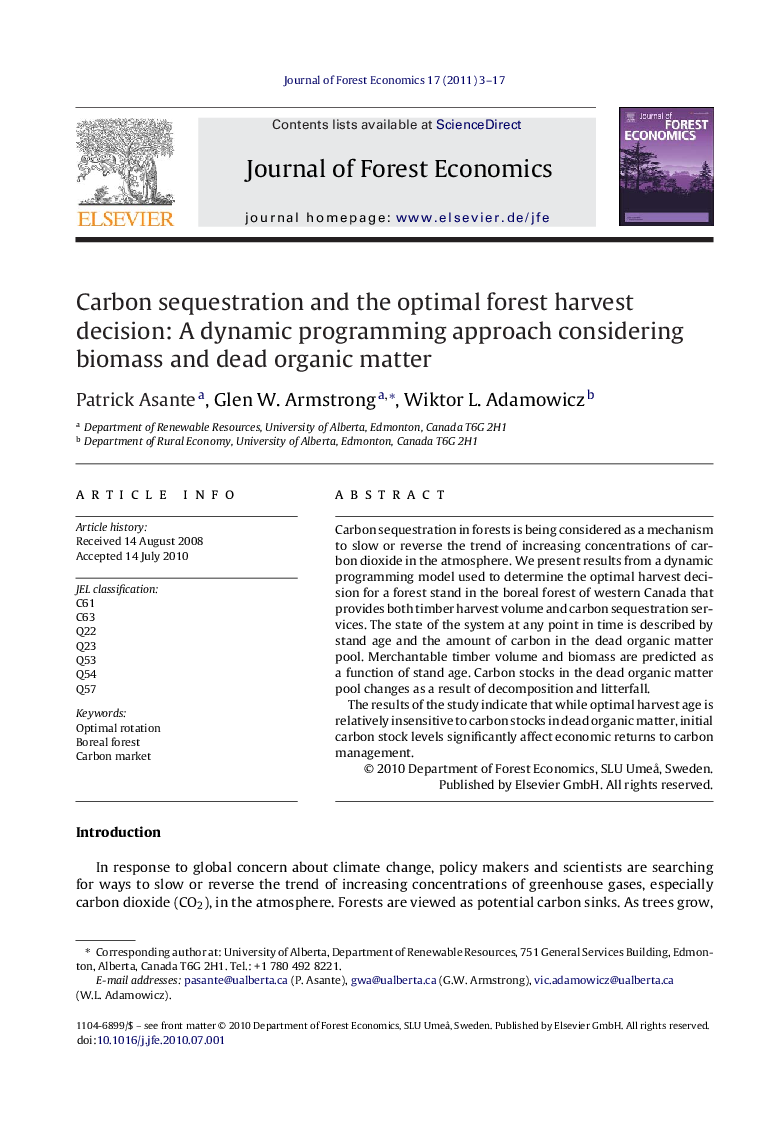| Article ID | Journal | Published Year | Pages | File Type |
|---|---|---|---|---|
| 92328 | Journal of Forest Economics | 2011 | 15 Pages |
Carbon sequestration in forests is being considered as a mechanism to slow or reverse the trend of increasing concentrations of carbon dioxide in the atmosphere. We present results from a dynamic programming model used to determine the optimal harvest decision for a forest stand in the boreal forest of western Canada that provides both timber harvest volume and carbon sequestration services. The state of the system at any point in time is described by stand age and the amount of carbon in the dead organic matter pool. Merchantable timber volume and biomass are predicted as a function of stand age. Carbon stocks in the dead organic matter pool changes as a result of decomposition and litterfall.The results of the study indicate that while optimal harvest age is relatively insensitive to carbon stocks in dead organic matter, initial carbon stock levels significantly affect economic returns to carbon management.
